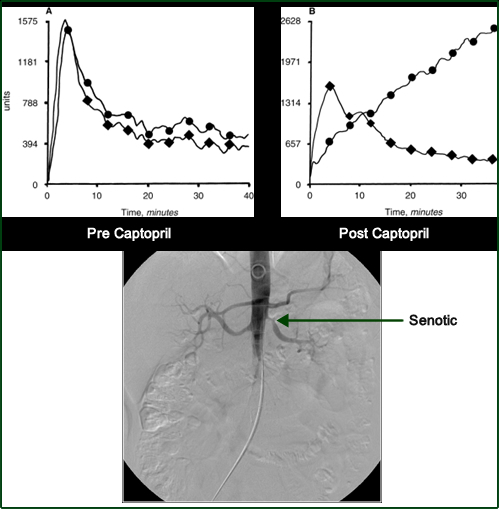Three sets of images show:
- The far right image shows normal blood flow is being supplied to the the glomerulus
- Effects of renal hypertension - RAS is a form of hypertension that reduction of blood flow to the afferent arterioles. This stenosis is usually caused by atherosclerosis or fibromuscular dysplasia.
- The jutaglomerular apparatus regulates this blood volume. When RAS is present it produces rennin in response to of reduced blood pressure
- Rennin is then converted to angiotensin I
- Angiotensin I with angiotensin converting enzyme produces angiotensin II
- This causes constriction of the efferent arterioles
- When an ACE inhibitor is applied it prevents the production of ACE conventing enzyme and stops the production of angiotensin II keeping the afferent arteriole dilated
- Results
- This throws off the equalized pressure from both ends of the arterioles resulting in extension of cortical transit and excretion phases of the time activity curve
- In severe cases the production of urine becomes static within the tubules and the effected kidney mimics blockage as seen below

- Example of left renal artery stenosis and how the role of Captopril helps identify RAS
Return to Renal Lecture
Return to Table of Content
